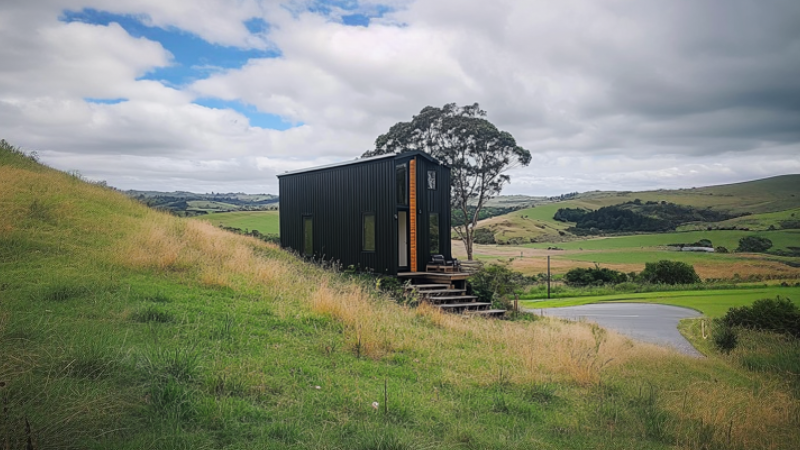But here’s the hard truth, without a proper agreement, what starts as a dream can quickly turn into a nightmare. Over the years, we’ve heard so many horror stories from people who thought a handshake deal would do the trick, only to find themselves stuck in toxic, stressful situation.
Take the landowner who swapped a land lease in exchange for a bit of lawn mowing and help maintaining the section. The tenant was all smiles at the start, saying how much they loved mowing. But as soon after moving in, the story changed. Suddenly, they felt too unwell to do the work, and the property was left to grow wild. What was once a casual verbal arrangement turned into a broken agreement and a big legal headache to evict them from the land.
Arrangements like exchanging labour for rent may sound appealing at first. They seem simple, fair, and a win-win for both parties. But as many have discovered, they can be a recipe for disaster. Situations change, illness, injury, or differing perceptions of the arrangement can leave both landowners and tenants frustrated and at odds. Without a written agreement, disputes can quickly escalate.
One way to avoid this potential pitfall is to reconsider the labour-for-rent approach altogether. Instead of relying on verbal promises and goodwill, it can be far more practical to charge a straightforward weekly rent. The money collected can then be used to hire a professional gardener or maintenance worker, ensuring the work is done consistently and to an acceptable standard.
Not only does this eliminate misunderstandings and unmet expectations, but it also keeps the relationship between tenant and landowner focused on the lease itself, rather than additional obligations. Everyone knows what they’re responsible for, and the stress of micromanaging tasks is taken off the table.
And then there’s the heartbreaking case of a couple left homeless after a dispute over the tiny house on leased land. Despite all their planning and effort, a disagreement with the landowner spiralled out of control, leaving the couple homeless, with no place to go and their dream Tiny House life in shambles. These situations are a harsh reminder of how quickly things can fall apart when expectations aren’t clearly spelled out and disagreements happen.
Family arrangements can feel like the safest option when it comes to leasing land for your tiny house. After all, who wouldn’t trust their own family? But when emotions run high and a disagreement escalates, things can go south fast. We’ve seen situations where a family feud leads to someone being told to pack up their tiny house and leave, often with no warning. The sense of betrayal and stress from being uprooted so suddenly is devastating, especially when there’s no written agreement to fall back on. These situations show that, even with family, clear terms and protections are essential to ensure everyone is on the same page and disputes don’t leave someone homeless.
Even friendship isn’t bulletproof. One tiny house owner split land with a friend, thinking it would be smooth sailing. But even the best friendships can be tested when money and living arrangements are involved. We’ve heard of situations where friends lease land to each other for a tiny house, only for misunderstandings or unmet expectations to sour the relationship. Whether it’s disagreements over boundaries, maintenance, or lifestyle differences, things can escalate quickly. In one case, a simple dispute over noise and visitors turned into a full-blown fight, with the tenant being told to move their tiny house with little notice. The friendship? Left in ruins.
These stories all have one thing in common: a lack of a solid, written agreement, with clear expectations. In New Zealand, if you’re leasing land for your tiny house, you’re not covered by the Residential Tenancies Act, it specifically says - This Act shall not apply in the following cases: where the premises comprise bare land (with or without facilities) on which the tenant has the right under the tenancy agreement to place or erect a mobile home, caravan, or other means of shelter. That’s why it’s so important to set everything out in writing before you even park your tiny house.
A written land lease isn’t just paperwork, it’s your legal safety net. It lays out everything you need to know, like who’s responsible for what, how much rent needs to be paid, and what happens if things go pear-shaped. Without it, you’re relying on good intentions, and we all know how quickly those can fade when money or stress is involved.
The great thing is, putting a lease together doesn’t have to be a mission. Templates from Tiny House Hub make it easy to cover all your bases, from rent and maintenance to dispute resolution. It’s a small investment for a whole lot of peace of mind.
We Kiwis are all about giving it a go, but when it comes to leasing land for your tiny house, you’ve got to protect yourself. A good lease isn’t just about avoiding trouble, it’s about building trust and setting the foundation for a great relationship between landowners and tiny house owners.
If you’re unsure where to start, grab our free guide, “Tenancy Act & Tiny Living” It’s packed with everything you need to know to lease land like a pro and avoid the dramas that come with winging it.


